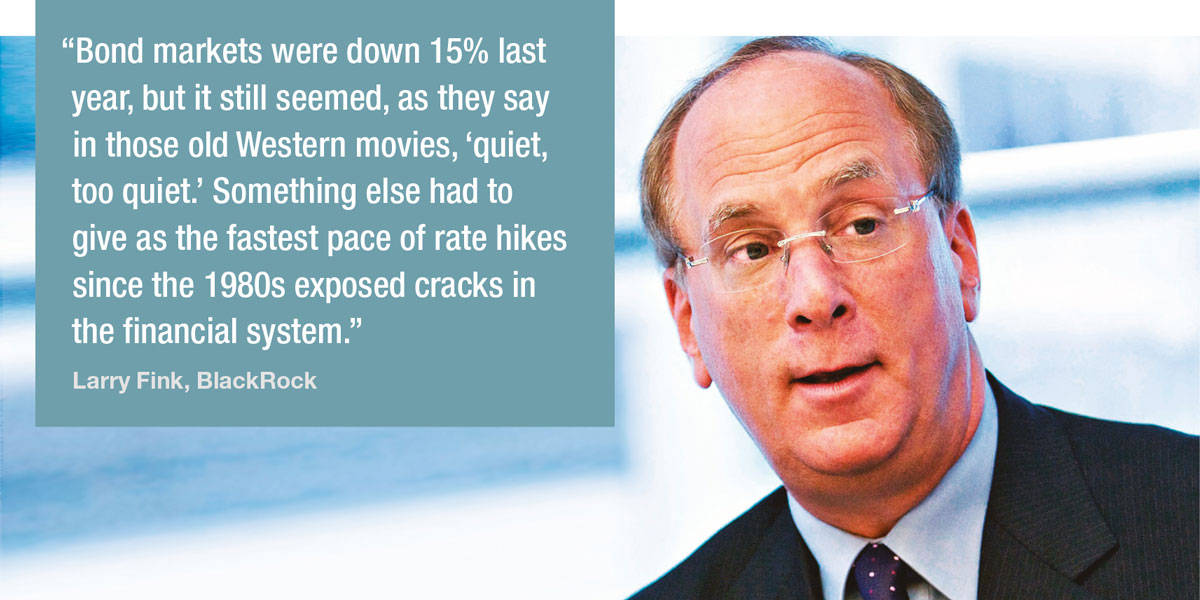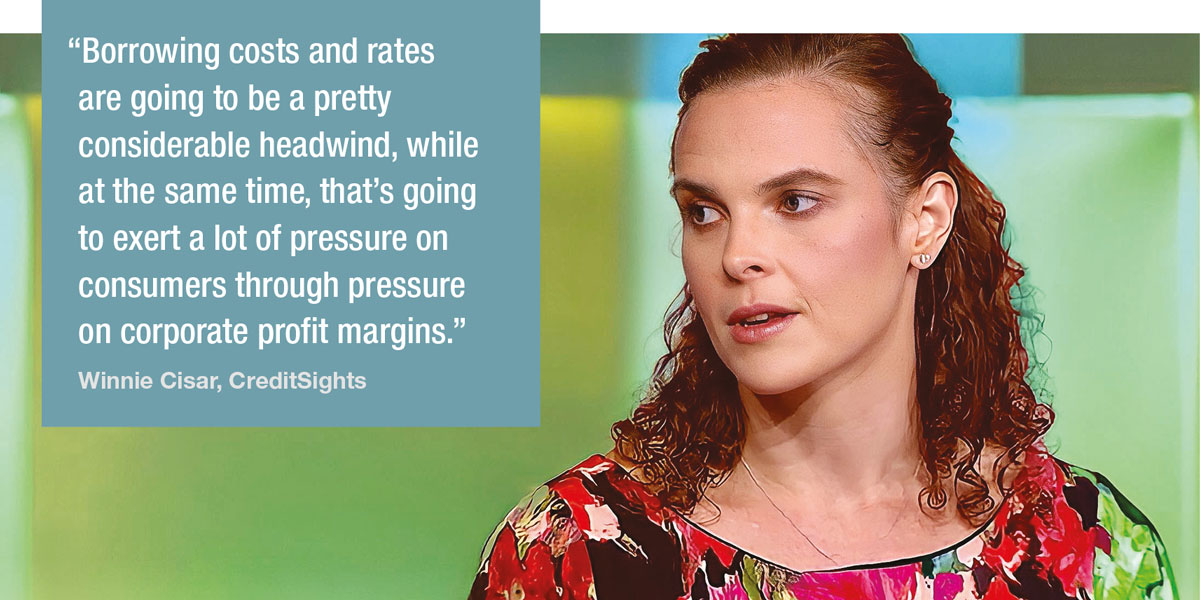New issues provide liquidity and price points for bond traders; we assess the prospects for the year ahead.
As the cost of borrowing continues to rise, with central banks raising interest rates to fight inflation, a reduction in borrowing would be a natural outcome. However, S&P Global Insights believes that global bond issuance is going to rebound slightly in 2023 after falling last year. Certainly, the start to the year appears to support this.
“Aggregate February issuance increased 23% year-on-year, posting the best month since November 2021,” wrote S&P’s Toni Kaplan and Greg Parrish. “Recovery in issuance was driven by corporate, particularly investment grade (IG), which increased 89% year on year. High yield (HY), was up 14% and leveraged loans, down 11%, posted strong months considering recent pressure in both markets. February year-on-year corporate issuance increased 54%, the best month since April 2020. Total aggregate issuance QTD was -8% through the end of February, and at this pace would mark the best quarter since 4Q21.”
Winnie Cisar, global head of strategy at CreditSights, says, “So far this year, it’s been off to a very robust start, especially in the investment grade market, both in the US and Europe. One thing that has been really notable is that we’ve seen a big shift in terms of issuance in the US away from financials and towards corporate. This is not particularly surprising financials tended to dominate the new issue market last year. We expected that the big six banks especially would see less new activity this year, and there was a significant backlog of corporate activity that needed to come to market this year. Also, not surprising, January and February were so robust that we tend to observe that issuance is front loaded in the beginning of the year.”
Even the higher costs for high yield issuers are not dampening expectations says Marc Plepelits, high yield partner at Allen & Overy.
“The overall expectation, if you look at the year as a whole, is still relatively positive,” says. “There are going to be a number of refinancings coming through, the really imminent ones, urgent ones that have to be done, most have been addressed. On top of that we are pretty optimistic that we’re going to see an inflow of M&A driven work. It’s not going to be initially blockbuster leveraged buy-out (LBO) deals, more of add ons and smaller LBOs, we already see some activity there.”

While inflation has failed to be tamed by the pressure central banks are exerting on consumption and debt through rate rises, central banks will continue to raise interest rates, and the ratings agency observes that any increases will be “less of a shock than the rate hikes of 2022” according to S&P.
Nevertheless, with pressure growing on the banking sector after the rescue of Credit Suisse by UBS, it is apparent that the combatting of inflation is creating the potential for systemic risk in markets.
The negative side of positive rates
Having delivered low rates for a decade to allow growth to recover following the global financial crisis, central banks have been caught out by the simultaneous effect of oil market volatility and the pandemic that broke out in 2020, followed by a major physical war in 2022.
These have seen a sudden impact on inflation that is not driven by consumer spending but by supply side shortages. A breakdown in political support for ‘globalism’ has also seen increased trade barriers being raised. The upshot is that consumers are struggling faced with shortages of energy, fuel and food, while central banks pull the only lever they have to fight inflation, which is essentially driving the populations of countries deliberately towards accepting shortages rather than increasing their capacity to fight against them, in order to slow price increases.
Due to the ineffectiveness of the policy so far – in part due to an early misreading of the length of time for which inflation would endure – the pace of rate increases is one not seen since the 1980s, a point BlackRock CEO Larry Fink observed in his annual letter to investors.

“Since the financial crisis of 2008, markets were defined by extraordinarily aggressive fiscal and monetary policy,” he wrote. “As a result of these policies, we’ve seen inflation move sharply higher to levels not seen since the 1980s. To fight this inflation, the Federal Reserve in the past year has raised rates nearly 500 basis points. This is one price we’re already paying for years of easy money – and was the first domino to drop. Bond markets were down 15% last year, but it still seemed, as they say in those old Western movies, ‘quiet, too quiet.’ Something else had to give as the fastest pace of rate hikes since the 1980s exposed cracks in the financial system.”
What has ‘given’ are parts of the banking system, which is built on balancing risk and reward from the rates charged to clients and those paid by the bank.
“It does seem inevitable that some banks will now need to pull back on lending to shore up their balance sheets, and we’re likely to see stricter capital standards for banks,” Fink wrote. “Over the longer term, today’s banking crisis will place greater importance on the role of capital markets. As banks potentially become more constrained in their lending, or as their clients awaken to these asset-liability mismatches, I anticipate they will likely turn in greater numbers to the capital markets for financing. And I imagine many corporate treasurers are thinking today about having their bank deposits swept nightly to reduce even overnight counterparty risk.”
John Kicken, high yield partner at Allen & Overy says, “It’s really about navigating through volatility this year. Being in the best possible position to execute quickly and being in the market for a very short time. You see deals being executed with extensive pre-marketing to bring in anchor investors upfront and address the issues early on. You can then go to market on short notice and possibly price intra-day to reduce the exposure to market volatility.”

Following the bankruptcy of Silicon Valley Bank (SVB) on 10 March 2023, there had been some changing views on the likelihood of the Federal Reserve reducing or pausing its rate hikes. Morgan Stanley’s fixed income analyst team wrote an assessment of the potential impact on bond issuance.
“Our bank equity colleagues do not anticipate a systemic liquidity crunch,” they wrote. “However, they see higher cost of funding, increased focus on bond issuance, and tighter lending standards as part of the new equilibrium. Tighter lending standards, in turn, will slow growth and hiring. Comfort with bank credit fundamentals has been shaken: For some time now, our view – one shared by many investors – has been that the banking sector’s fundamentals are in a good place and last year’s underperformance vs. non-financials was largely a technical story. The developments of the past week have undermined this thesis. Given that the sector was a consensus overweight and is also likely to see more supply when markets normalise, we see continued volatility and increased tiering within bank credit.”
The underlying drivers for issuance
While Cisar says that CreditSights is not necessarily anticipating the level of new issue activity seen in January and February to be replicated every month, the firm is calling for new issues in the US IG market to be down a bit this year, compared to last year, in total, with the Euro market, coming in fairly flat.
“This is based on a combination of the reality that yields are higher, borrowing costs are higher, even with the rallies that we’ve seen across the board from a spreads perspective, borrowing costs are still well elevated compared to where we have been,” she says.
That is likely to put a lid on discretionary issuance in areas like funding share buybacks, funding dividends, and to some extent corporate mergers and acquisition supported by debt.
“It’s probably going to be a little bit slower this year, just because there’s still a lot of uncertainty around equity valuations and the outlook for the economy. So really, the base level of what needs to get done is the refinancing type of transactions. Based on our math, we don’t expect a massive amount of refi needs to get done, we think that the US market is somewhere between US$700-US$800 billion and the Euro market around €300-€350 billion, which are very manageable numbers overall.”
Morgan Stanley’s perspective was that the investment picture for corporate debt would need to be reassessed, in order to manage the potential for greater risk exposure.
“In broader credit we stay firmly up in quality and liquidity,” they wrote. “Tighter and more expensive bank lending is likely to weigh disproportionately on smaller, lower-quality borrowers. We see this as a case for decompression within credit. We also think switching exposure from cash bonds to CDX indices is prudent, as better liquidity in the latter may temper any overshoot.”
Following the Credit Suisse collapse and subsequent rate hike, the cost of liquidity in the credit default space may increase further.
The problem child for credit would be stagflation, if central banks are not able to get a handle on inflation and it is running for an extended period of time.
Cisar says, “That would be kind of the worst case scenario for corporate credit from a returns perspective, over an extended period of time. I would expect new issues to come down pretty dramatically as companies try to manage all of those different competing challenges.”
©Markets Media Europe 2023
©Markets Media Europe 2025



























